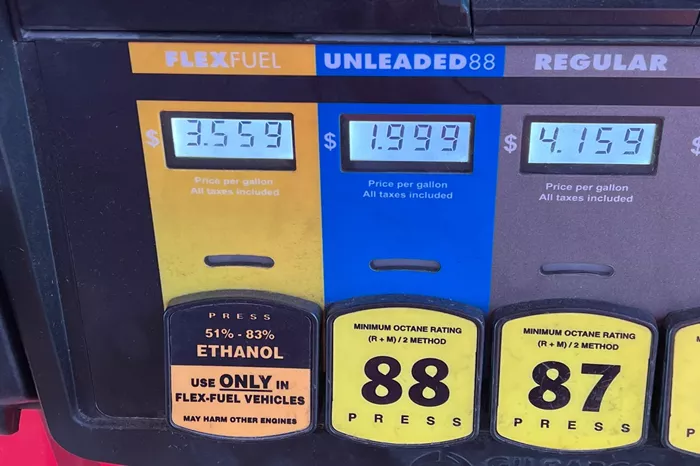Fuel technology is evolving rapidly, driven by the need for cleaner, more efficient energy sources. Traditional fuels are being replaced by newer alternatives that promise reduced emissions and better performance. One of the significant developments in this area is the introduction of new unleaded fuels. This article will explore the new unleaded fuel, its benefits, and its impact on the automotive industry.
Introduction to Unleaded Fuels
Unleaded fuels are gasoline types that do not contain lead compounds. They are designed to reduce harmful emissions and improve air quality.
Key Characteristics
Lead-Free: Unleaded fuels do not contain tetraethyl lead, a toxic additive used in older gasoline formulations.
Cleaner Combustion: They produce fewer pollutants compared to leaded fuels.
Compatibility: Suitable for modern engines designed to run on unleaded gasoline.
Historical Context
The transition from leaded to unleaded fuels began in the 1970s due to environmental and health concerns.
Environmental Impact
Air Pollution: Leaded gasoline contributed significantly to air pollution.
Health Risks: Lead exposure poses severe health risks, including neurological damage.
Regulatory Changes
Legislation: Governments worldwide introduced regulations to phase out leaded gasoline.
Catalytic Converters: The introduction of catalytic converters in cars required the use of unleaded fuel to function correctly.
The New Unleaded Fuel: E10
The new unleaded fuel that is gaining popularity is called E10. It is a blend of 90% unleaded gasoline and 10% ethanol.
Ethanol Component
Renewable Source: Ethanol is produced from renewable resources, such as corn and sugarcane.
Reduced Emissions: Ethanol burns cleaner than gasoline, reducing greenhouse gas emissions.
Key Benefits of E10
Environmental Benefits: Lower emissions contribute to improved air quality.
Energy Security: Using domestically produced ethanol reduces dependence on imported oil.
Economic Impact: Supports the agricultural sector and creates jobs in the ethanol production industry.
How E10 Differs from Traditional Unleaded Fuels
E10 differs from traditional unleaded gasoline in several ways, primarily due to its ethanol content.
Performance
Engine Compatibility: E10 is compatible with most modern vehicles but may not be suitable for older models or specific high-performance engines.
Fuel Economy: Ethanol has a lower energy density than gasoline, which may result in slightly reduced fuel economy.
Environmental Impact
Reduced Emissions: E10 produces fewer pollutants, such as carbon monoxide and nitrogen oxides.
Carbon Footprint: The use of ethanol helps reduce the overall carbon footprint of fuel consumption.
Adoption of E10
The adoption of E10 varies by region, influenced by government policies, availability of ethanol, and public acceptance.
United States
Widespread Use: E10 is widely available across the United States and is used in most gasoline-powered vehicles.
Regulatory Support: Policies and incentives support the production and use of ethanol-blended fuels.
Europe
Varying Adoption: European countries have different levels of E10 adoption, with some countries embracing it more fully than others.
Environmental Regulations: Stricter emissions standards drive the adoption of cleaner fuels like E10.
Australia
Growing Acceptance: E10 is becoming more common in Australia, with increased availability at fuel stations.
Government Initiatives: Programs and incentives encourage the use of E10 to reduce emissions and support local ethanol production.
See also: Coleman Fuel Vs Unleaded Gasoline: What Is The Difference?
Challenges and Considerations
While E10 offers many benefits, there are also challenges and considerations that need to be addressed.
Compatibility Concerns
Older Vehicles: Some older vehicles may not be compatible with E10 due to potential issues with fuel system components.
Small Engines: E10 may not be suitable for small engines, such as those in boats, lawnmowers, and motorcycles.
Consumer Awareness
Education: Consumers need to be informed about the benefits and potential issues of using E10.
Labeling: Clear labeling at fuel stations helps consumers make informed choices.
Infrastructure
Distribution: Ensuring a consistent supply of ethanol for blending with gasoline.
Storage and Handling: Ethanol-blended fuels require specific storage and handling practices to prevent contamination.
Benefits of E10
Despite the challenges, E10 offers significant benefits for the environment, economy, and energy security.
Environmental Benefits
Reduced Emissions: Lower levels of harmful emissions contribute to improved air quality and reduced greenhouse gas emissions.
Renewable Source: Ethanol is produced from renewable resources, making E10 a more sustainable fuel option.
Economic Benefits
Support for Agriculture: Ethanol production supports farmers and the agricultural industry.
Job Creation: The ethanol industry creates jobs in production, distribution, and retail.
Energy Security
Reduced Oil Dependence: Using domestically produced ethanol reduces reliance on imported oil.
Diversification: E10 contributes to a diversified energy mix, enhancing energy security.
Future of Unleaded Fuels
The future of unleaded fuels is evolving, with ongoing research and development aimed at creating cleaner, more efficient fuel options.
Advanced Biofuels
Second-Generation Biofuels: These fuels are made from non-food biomass, such as agricultural waste and algae.
Sustainability: Advanced biofuels offer greater sustainability and lower environmental impact.
Electric and Hybrid Vehicles
Electrification: The rise of electric and hybrid vehicles reduces dependence on traditional fuels, including E10.
Integration: Ethanol-blended fuels can complement the transition to electric vehicles, providing cleaner options for internal combustion engines.
Hydrogen Fuel
Hydrogen Economy: Hydrogen is being explored as a clean fuel alternative for various applications, including transportation.
Challenges: Infrastructure development and production costs are significant challenges for widespread hydrogen adoption.
Conclusion
E10 is the new unleaded fuel that is gaining traction globally. It is a blend of 90% unleaded gasoline and 10% ethanol, offering numerous benefits such as reduced emissions, improved energy security, and economic support for the agricultural sector. While there are challenges to its adoption, including compatibility concerns and the need for consumer education, E10 represents a significant step towards cleaner, more sustainable fuel options. As the automotive industry continues to evolve, the role of fuels like E10 will be crucial in balancing environmental goals with practical energy needs. The future of unleaded fuels looks promising, with ongoing innovations aimed at creating even cleaner and more efficient energy solutions. By understanding and embracing these new fuel technologies, we can contribute to a more sustainable and environmentally friendly future.
Related topics:
Is Shell V-Power Gasoline Unleaded?

